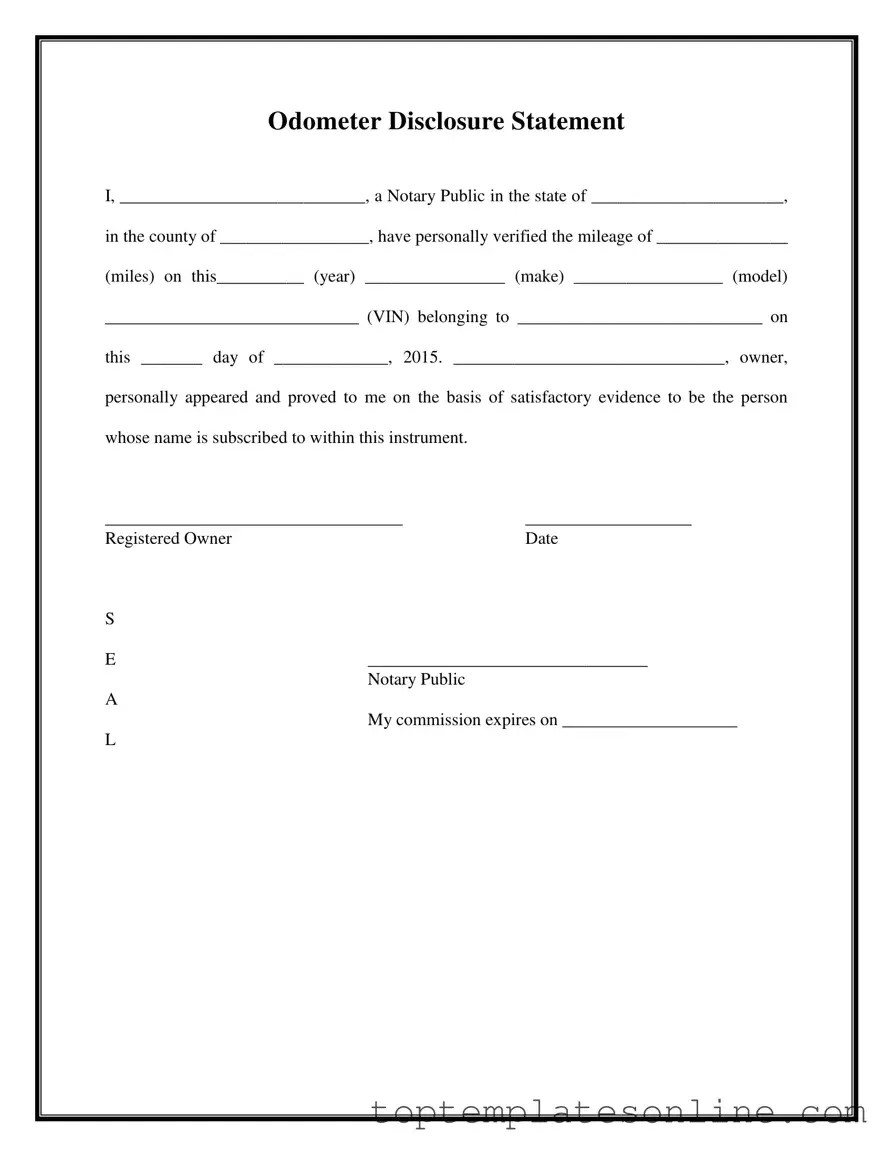The Notarized Odometer Statement form serves as a crucial document in vehicle transactions, ensuring transparency and accuracy regarding a vehicle's mileage. This form is typically required when transferring ownership of a vehicle, providing a legal record of the odometer reading at the time of sale. It includes essential details such as the vehicle's make, model, and Vehicle Identification Number (VIN), as well as the current mileage. A notary public verifies the information, confirming the identity of the seller and the authenticity of the statement. This verification process helps prevent fraud and protects both the buyer and seller from potential disputes over mileage discrepancies. By documenting the odometer reading, the form also aids in compliance with state regulations that mandate odometer disclosures during vehicle sales. Overall, the Notarized Odometer Statement is a vital tool in the vehicle transfer process, fostering trust and accountability between parties involved.
